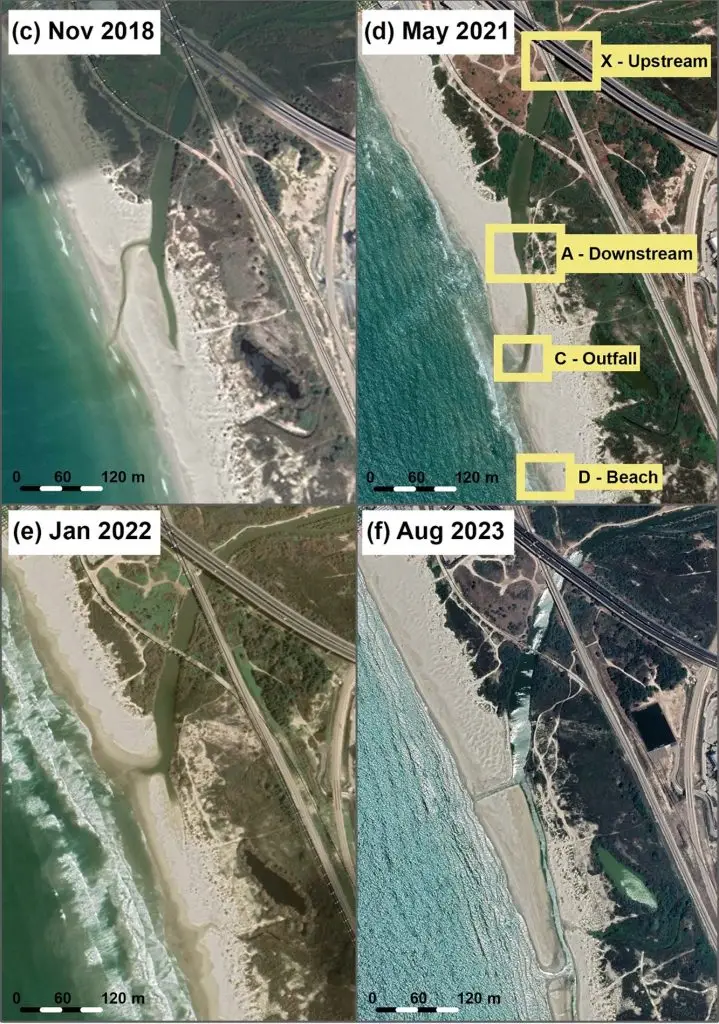A new publication titled “Seasonal Pulses of Microplastic Emissions to the Mediterranean Sea” and authored by Annelise Ferry, Yael Segal, Revital Bookman, Ioannis Savva and Dror Angel was just published in the journal of Environmental Research: Letters.
Microplastics (<5 mm) are persistent and ubiquitous pollutants in aquatic environments, with over 80% originating from terrestrial sources. While their presence in the Mediterranean Sea has been documented, studies on microplastic (MP) inputs via local streams remain limited. This study quantified and characterized MP abundances along the Na’aman stream (Israel) and its outlet to the Mediterranean Sea, with samples collected before, during, and after the rainy season from established transects along the streambank and from the nearby beach. The spatial distribution and abundances of microplastics were examined in relation to seasonal and hydrological conditions. Microplastics were sorted by type and counted by dissecting microscope. A representative subset of putative MP particles was examined using Fourier Transform Infrared Spectroscopy. The overall mean (± standard error) microplastic abundance for the Na’aman stream was 231.2±66.9 particles kg-1 sediment dry weight, with significant seasonal and spatial variation. MP accumulation increased during dry months and decreased sharply following flood events—dropping by 43% after a 13 mm rainfall event that triggered stream discharge of 3.25 m³ s-1, highlighting the stream’s role in flushing MPs to the sea. The most common MP types were fragments (61.9%), fibers, and foam, with polypropylene accounting for 56.9% of analyzed particles. MP types and polymer compositions varied by site and season, suggesting diverse sources such as domestic wastewater, agriculture, and marine backflow. These findings confirm that ephemeral stream systems can temporarily trap and subsequently remobilize MPs, acting as critical conduits between land-based sources and the marine environment. Targeted mitigation efforts—such as seasonal cleanup campaigns just before the rainy season—could significantly reduce MP flux to the sea in this location. This is the first documented assessment of microplastic transport from a freshwater stream into the Mediterranean Sea in Israel and may serve as a baseline for future monitoring in similar Mediterranean-climate regions.
Read the full text here.


